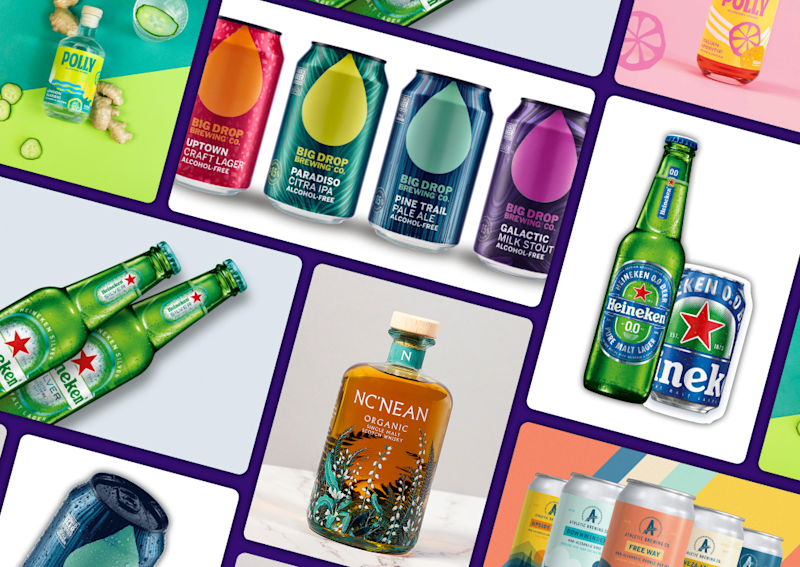In many ways, 2020 was a hard reset for the world. With a majority of our collective time spent at home, people had plenty of opportunities to reflect on their lives and habits — and many made drastic changes to both.
Removed from the social pressures of having to be everywhere and do everything at once — work hard, socialize, exercise, travel, etc. — people were able to carve out a new definition of “essential” and how to fit into their lives.
And that which remained became more important than ever before. By clearing out the excess and moving towards more intentional habits and consumption, it follows that consumers are now consciously choosing which brands to support. Say goodbye to impulse purchases being the norm.
The Covid-19 pandemic also helped people become far more attuned to the ways in which they’re all connected and how their personal choices affect others. These realizations have and will continue to directly affect what brands consumers will support and buy from going forward.
By making more mindful purchase decisions, consumers are staunchly standing behind their values — supporting movements like sustainability, anti-racism, social equality, and more. So how will this shift from excess to intentional consumption affect your brand?
Let’s take a look at some of the industries affected, dig into “people-positive marketing”, and discuss a few tips to point you in the right direction.
Which Industries Will Feel The Shift Towards Intentionalism?
To be fair, most industries will be affected in some manner by the rise in intentionalism. After all, what is deemed “essential” to one consumer won’t necessarily hold for another.
However, some industries will be slightly more affected than others — especially those that touch on traditionally non-essential products and services like entertainment, the arts, hospitality, fashion, manufacturing, transportation, and more.
How affected your brand will be is also dependent on the demographic makeup of your target audiences. For example, a recent report from HBOMax found that 60% of Gen Z and Millennials saw 2020 as a “year of necessary reckoning and reflection that will open (them) up for much more growth in 2021.”
Younger generations are clearly taking intentionalism and growth more seriously — with 71% having reported that they’re more thoughtful and purposeful in their decision-making now than they were at the start of the pandemic.
Another 77% of Gen Z and Millennials agreed that when they now have free time, they’re much more thoughtful about how they use it.
Translation? Younger customers are changing the ways in which they consume goods and services in 2021 and beyond. And brands will need to find new, more emotionally and purpose-driven ways of connecting with and showing up for them if they want to remain in their good graces.
This, of course, is where “people-positive” marketing comes in.
The Rise of “People-Positive” Marketing
In HBOMax’s report, the concept of “people-positive” marketing and its role in the rise of intentionalism is discussed in detail. The report claims that, in “the wake of intentionalism, brands must embrace a generous, regenerative approach to marketing — giving back more than they take from consumers.”
Gone are the days of “fighting for” consumers’ time, instead “brands need to have people-positive interactions and purpose-driven approaches to add to consumers' lives — whether that's by rewarding audiences with more of the content they love or making a tangible commitment to a social cause.”
The concept of “people-positive” marketing is fairly new, and it can be defined as a shift from a brand-centric to a human-centric marketing approach. Instead of focusing solely on advertising your brand’s products and services, you need to focus on what your brand does for consumers — how it improves their lives, supports their goals, and aligns with their values.
Modern consumers, especially younger generations, are no longer interested in brands that exist solely to sell their products and make profits. They want companies with a mission, vision, and a set of values that they actually live up to.
But it’s not as easy as it seems. Building trust with modern consumers is more difficult than it’s ever been before, as the internet provides all the information one needs and, thus, it’s impossible to hide anything.
Did your brand claim to be environmentally friendly then roll out a product line with one-use plastic? It’s only a matter of time before you’ll be caught and called out on social media or in the news. When consumers are intentional about the purchases they make and the brands they use, they’re even more likely to be affected by such lapses in judgment.
“People-positive” marketing is about understanding what your customers want, taking their needs into consideration, and creating an integrated experience that enhances their lives. It empowers them to learn more about your brand while respecting their time and viewpoints. It also embraces diversity and promotes a connection between communities while being a source for social good.
In a day and age where there’s been so much change, loss, and upheaval — to be successful, brands need to understand that emotional connection is the way forward. If you want to convince consumers to purchase your products and support your brand, you have to make yourself essential in their lives.
Let’s discuss a few ways that all brands can embrace intentionalism and find success in this changing landscape.
3 Tips To Help Your Brand Embrace Intentionalism
In order to move with the times and embrace the rise of intentionalism, here are a few tips you can integrate into your marketing strategy.
1. Highlight Your Strengths
The easiest way to inform consumers about all the great causes you’re donating to, the values you stand for, and the pillars of your brand? Put it all in one, easy-to-access place on your website.
Consumers want to know that your brand aligns with their values and follows through on their promises — especially if their decision to purchase is intentional. By creating a one-stop-shop that highlights all the reasons you’re worth their time and money, it’s easier to connect with and impress potential customers.
It even makes sense to consider joining a platform like Intentionalist, a US-based brand founded by Laura Clise that provides a directory of businesses for positive brands. With the slogan “Spend like it matters”, Intentionalist fits right into the intentionalism movement.
In an article for Geekwire, Clise explains that the goal of her brand is to make it “easier for consumers to patronize businesses in a more thoughtful way than spending their money based solely on what’s cheapest and most convenient.” Joining forces with a company like Intentionalist also provides a strong trust signal for consumers — proving that you’re a brand to intentionally support.
2. Get Involved, But Also Listen
Consumers are no longer satisfied with brands simply being advertisers/providers of products and services — they want more.
In HBOMax’s survey, they found that when asked which role consumers would like brands to play in 2021, “advertisers” was chosen the least at 10%. Instead, they want brands to be entertainers (30%), informers (23%), activists (16%), and listeners (14%).
What does this mean for brands? Well, your content can’t revolve solely around advertising your products anymore — which is something you’re already aware of. However, there are some new insights here: consumers also want brands to be activists and listeners.
This means getting involved with the causes you support — donating money, taking vocal stands, and doing the work required to make a difference. It also reveals that brands need to take a step back and listen. Really focus on what consumers want and how they feel about your brands.
But to be able to listen to consumers, you need consumer insight data. That’s where brand monitoring comes in. With the ability to gather accurate, reliable data from your actual target audiences — you can listen to your customers, learn from them, and better meet their needs going forward.
3. Increase Personalization
“People-positive” marketing and intentionalism are all about giving back to consumers and putting their needs first.
Instead of asking yourself “What will further our brand’s goals and increase profits?”, ask “What will make our consumers happy and inspire them to intentionally choose our brand?”
One of the best ways to connect with customers and become essential to their lives is through personalization. When your brand communicates in a way that speaks directly to their interests and needs, they’re far more likely to feel a kinship with you — which will have an impact on consumer decisions.
From sending personalized emails tailored to their interests to suggesting content you think they’ll appreciate — there are plenty of ways to personalize your user journey and your customer experience in a way that will show users you understand them.
Final Thoughts
The last year and a half shook up many people’s “cruise control” approach to life. They reevaluated their priorities and made a concerted effort to only keep that which benefited them in the long term.
This approach also affected the ways consumers shopped and, thus, we’ve seen a marked rise in intentionalism. This trend isn’t likely to disappear anytime soon, and if brands want to succeed in this new environment, they’ll need to adjust their marketing and advertising strategies.
Keep our tips in mind and consider adding brand tracking software to your arsenal — knowing how consumers perceive your brand will be essential to succeeding on your “people-positive” marketing journey.





![Illustration of two people looking at a car, tv, and Lego house [Thumbnail]](http://images.ctfassets.net/7so8go2zrvbw/2PvqpZ8uSZxMS0sKR9s2tw/2ea497a65052b40be049dc5e93b966c1/Blog_SEO-Thumbnail_1000X709_-_2022-08-22T095356.440.png?w=800&h=567&q=95&fm=png)
